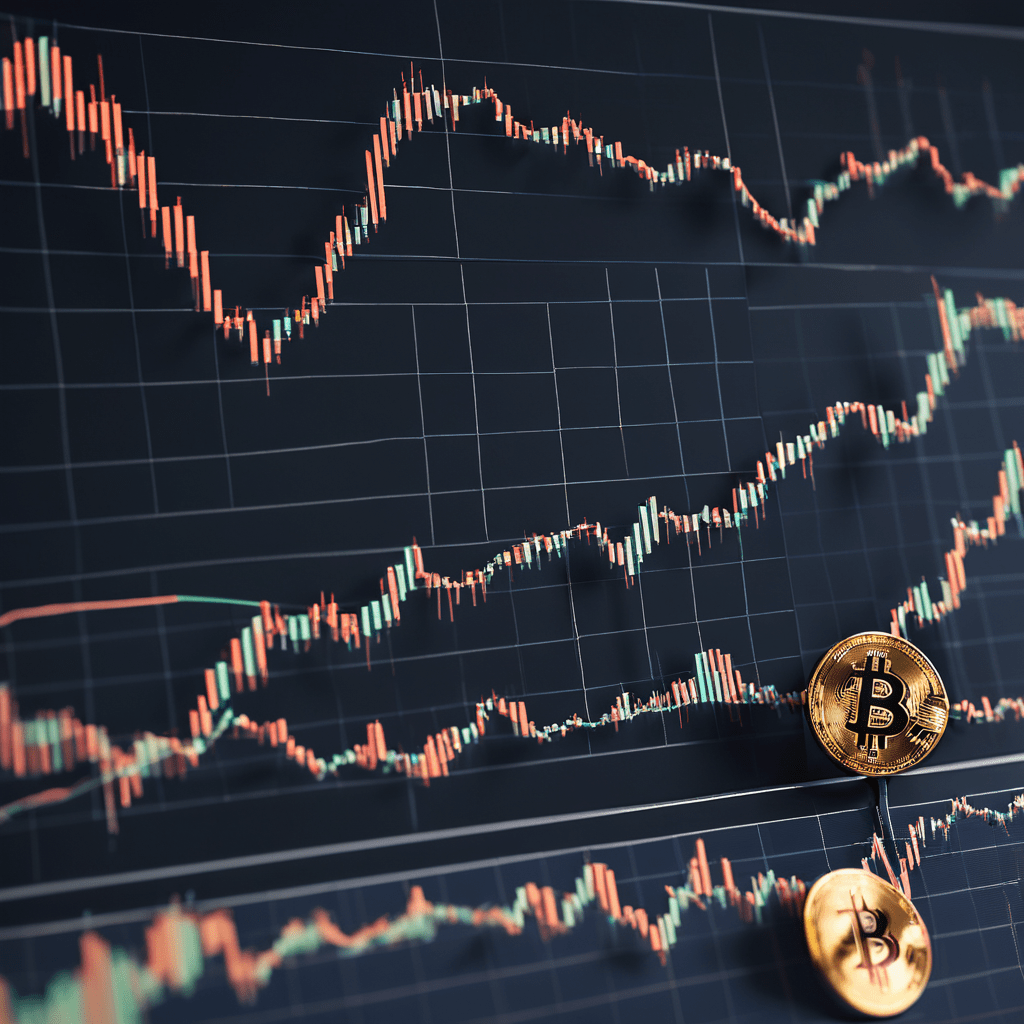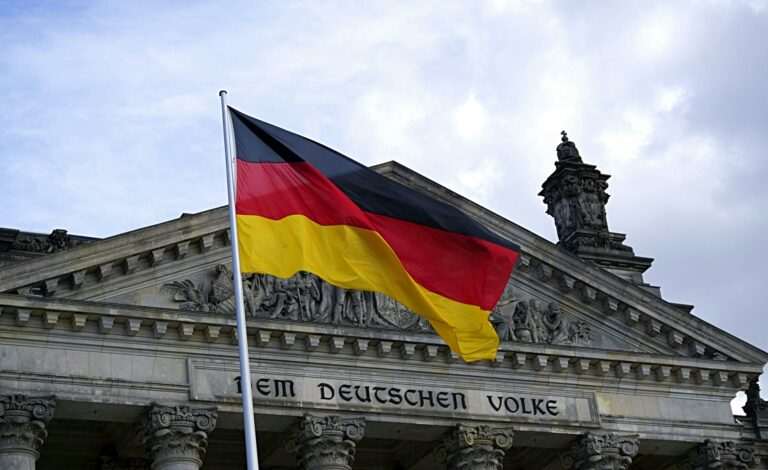Prince of Serbia Explains Why this Bitcoin Cycle is Different
As the world of digital currency continues to evolve, key figures in the industry are offering their insights into why this bitcoin cycle is different from previous ones. Among these voices is Prince Philip of Serbia, who brings a unique perspective to the table, combining his royal background with his experience in traditional finance and his current role in the Bitcoin space.
Table of Contents
Why This Bitcoin Cycle is Different: The Institutional Factor
How Institutional Adoption Sets This Cycle Apart
One of the primary reasons why this Bitcoin cycle is different, according to Prince Philip, is the unprecedented level of institutional adoption. Unlike previous cycles, which were largely driven by retail investors and early adopters, this current phase has seen major financial institutions and corporations enter the space in a significant way.
Prince Philip points out that the introduction of spot Bitcoin ETFs in the United States has been a game-changer. These investment vehicles have provided a regulated and familiar way for traditional investors to gain exposure to Bitcoin, leading to a surge in demand from institutional players. As he notes, “You can see the demand there. They’re sucking up coins like there’s no tomorrow.”
This institutional involvement brings a new level of legitimacy and stability to the Bitcoin market. It also introduces a different dynamic in terms of buying pressure and long-term holding strategies, which could potentially reduce volatility and support sustained price growth.
Why This Bitcoin Cycle is Different: Supply Dynamics
The Impact of Halving and Supply Constraints on This Cycle
Another crucial factor that makes this Bitcoin cycle different is the unique supply dynamics at play. Prince Philip emphasizes the importance of the upcoming halving event, which will reduce the rate of new Bitcoin creation. This event, combined with the current demand from institutional buyers, creates a potentially explosive situation for Bitcoin’s price.
As Prince Philip explains, “Post-halving, we’re looking at about 4,000 coins being sucked up a day on average. We have 900 coins being produced right now every day, and that’s going to be halved to 450.” This stark imbalance between supply and demand is unprecedented in previous Bitcoin cycles.
Furthermore, Prince Philip points out that there is a “lack of paper Bitcoin out there,” referring to the reduced availability of Bitcoin derivatives and other financial products that don’t involve actual Bitcoin ownership. This scarcity of easily tradable Bitcoin-related instruments further amplifies the supply squeeze.
Why This Bitcoin Cycle is Different: The Global Economic Context
How Macroeconomic Factors Influence This Unique Bitcoin Cycle
The global economic landscape plays a significant role in why this Bitcoin cycle is different. Prince Philip, drawing on his background in traditional finance, highlights how the current macroeconomic environment is creating a perfect storm for Bitcoin adoption.
Inflationary pressures, ongoing quantitative easing by central banks, and concerns about the stability of traditional financial systems have all contributed to increased interest in Bitcoin as a hedge against economic uncertainty. This broader economic context was not as prominent in previous cycles, making the current situation unique.
Prince Philip’s perspective aligns with that of Jeff Booth, a well-known Bitcoin advocate, who has long argued that deflationary technologies like Bitcoin are the answer to the inflationary policies of central banks. This confluence of technological advancement and economic necessity is a key reason why this Bitcoin cycle is different.
The Energy and Mining Landscape
How Energy Dynamics and Mining Trends Make This Cycle Unique
The relationship between Bitcoin mining and energy markets is another factor that sets this cycle apart. Prince Philip emphasizes the growing interest from energy producers in Bitcoin mining as a way to monetize surplus or stranded energy resources.
This trend is creating new dynamics in the Bitcoin mining industry, potentially leading to more geographically diverse and sustainable mining operations. As Prince Philip notes, “If you have energy and if you have a surplus of energy or even if you have an energy situation problem in your country, you need to find more energy. Bitcoin can help you with that.”
This integration of Bitcoin mining with energy markets is a relatively new phenomenon that wasn’t as prominent in previous cycles. It has the potential to reshape not only the Bitcoin mining landscape but also global energy markets, further underlining why this Bitcoin cycle is different.
Regulatory Landscape
The Evolving Regulatory Environment’s Impact on This Cycle
The regulatory environment surrounding Bitcoin has evolved significantly, contributing to why this Bitcoin cycle is different. Prince Philip notes that while regulatory challenges remain, there’s a growing understanding and acceptance of Bitcoin among policymakers and regulators in many jurisdictions.
This evolving regulatory landscape is creating more clarity for institutional investors and businesses looking to engage with Bitcoin. It’s also paving the way for more mainstream adoption and integration of Bitcoin into existing financial systems.
The prince’s work with Jan3, a company focused on nation-state Bitcoin adoption, gives him unique insights into how governments are approaching Bitcoin. This governmental interest and potential for nation-state adoption is a new factor that wasn’t present in previous Bitcoin cycles.
Technological Advancements
How Technical Innovations Are Shaping This Unique Cycle
Technological advancements in the Bitcoin ecosystem are another reason why this Bitcoin cycle is different. Prince Philip highlights the continued development of the Lightning Network and other layer-2 solutions as key factors enhancing Bitcoin’s utility and scalability.
These technological improvements address many of the concerns raised in previous cycles regarding Bitcoin’s ability to function as both a store of value and a medium of exchange. As these solutions mature and gain adoption, they’re creating new use cases and opportunities that weren’t available in previous cycles.
Changing Narratives
The Evolution of Bitcoin’s Perception in This Cycle
The narratives surrounding Bitcoin have evolved significantly, contributing to why this Bitcoin cycle is different. Prince Philip notes that Bitcoin is increasingly being recognized not just as a speculative asset, but as a serious financial tool and potential solution to global economic challenges.
This shift in perception is evident in the way major financial institutions and corporations are approaching Bitcoin. It’s no longer seen as a fringe technology, but as a legitimate asset class and potential hedge against inflation and currency devaluation.
The prince’s own journey from traditional finance to Bitcoin advocacy illustrates this changing narrative. His transition reflects a broader trend of financial professionals recognizing Bitcoin’s potential and actively engaging with the technology.
Why This Bitcoin Cycle is Different: Global Geopolitical Factors
The Impact of Global Events on This Unique Bitcoin Cycle
Global geopolitical factors are playing a significant role in why this Bitcoin cycle is different. Prince Philip points to events such as the ongoing tensions between major world powers, economic sanctions, and concerns about the stability of the global financial system as factors driving interest in Bitcoin.
These geopolitical tensions are leading individuals, companies, and potentially even nations to look for alternatives to traditional financial systems. Bitcoin, with its decentralized nature and inability to be controlled by any single entity, is increasingly being seen as a potential solution.
This geopolitical dimension adds a new layer of complexity and potential to the current Bitcoin cycle that wasn’t as prominent in previous ones.
Why This Bitcoin Cycle is Different: The Role of Education and Awareness
How Increased Understanding is Shaping This Bitcoin Cycle
Prince Philip emphasizes the importance of education and awareness in why this Bitcoin cycle is different. He notes that there’s a growing understanding of Bitcoin’s fundamentals among both retail and institutional investors.
This increased knowledge base is leading to more informed decision-making and potentially more stable and sustainable growth. It’s also contributing to a more nuanced public discourse about Bitcoin, moving beyond simplistic narratives of speculation and volatility.
The prince’s own efforts in Bitcoin education, through his work with Jan3 and his public advocacy, are part of this broader trend of increasing Bitcoin literacy.
Why This Bitcoin Cycle is Different: The Convergence of Factors
How Multiple Elements Combine to Make This Cycle Unique
Ultimately, what makes this Bitcoin cycle different is the convergence of multiple factors. Prince Philip emphasizes that it’s not any single element, but the combination of institutional adoption, supply dynamics, global economic conditions, technological advancements, and changing narratives that sets this cycle apart.
This multi-faceted nature of the current cycle creates a more complex and potentially more robust foundation for Bitcoin’s growth. It’s this convergence that leads Prince Philip and others to believe that this cycle could indeed be different from previous ones.
A Royal Perspective on Bitcoin’s Future
As we’ve explored throughout this article, there are numerous reasons why this Bitcoin cycle is different, according to Prince Philip of Serbia. From the unprecedented institutional adoption to the unique supply dynamics, from the global economic context to the evolving regulatory landscape, this cycle presents a confluence of factors that set it apart from previous ones.
Prince Philip’s perspective, informed by his background in traditional finance and his current role in the Bitcoin space, offers valuable insights into the current state of the market and its potential future trajectory. His views align with those of other prominent Bitcoin advocates like Jeff Booth, who see Bitcoin as a transformative technology with the potential to reshape the global financial system.
However, it’s important to note that while there are many reasons to believe this cycle is different, the cryptocurrency market remains highly volatile and unpredictable. As Prince Philip and other experts often remind us, it’s crucial for investors and enthusiasts to do their own research and understand the risks involved.
As we move forward, it will be fascinating to see how these various factors play out and whether this Bitcoin cycle truly proves to be as different and transformative as Prince Philip and others believe it could be. Regardless of the outcome, one thing is clear: Bitcoin continues to challenge our understanding of money, technology, and global economics in ways that few could have predicted when it first emerged over a decade ago.







